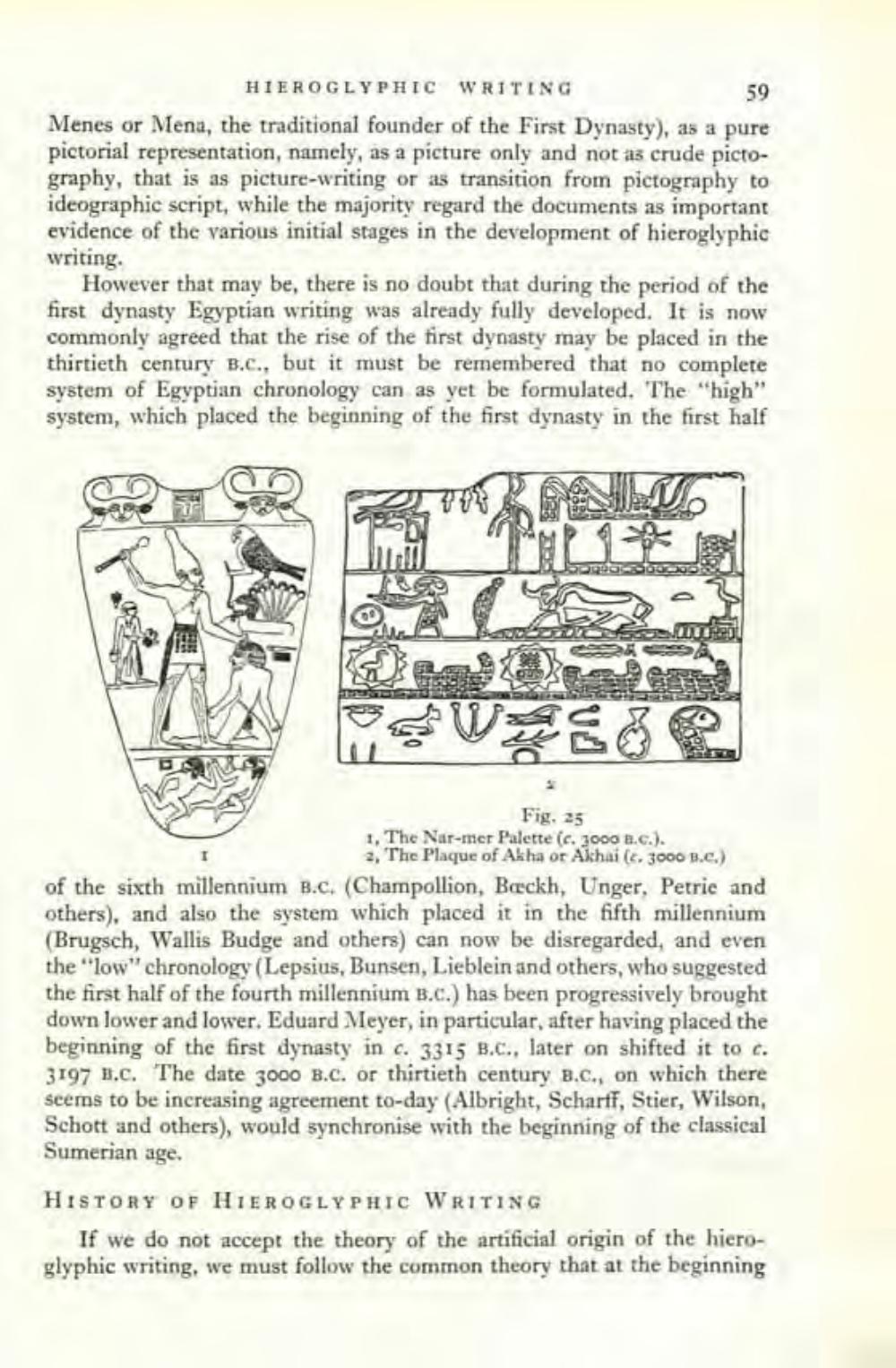________________
HIEROGLYPHIC WRITING
59 Menes or Mena, the traditional founder of the First Dynasty), as a pure pictorial representation, namely, as a picture only and not as crude pictography, that is as picture-writing or as transition from pictography to ideographic script, while the majority regard the documents as important evidence of the various initial stages in the development of hieroglyphic writing.
However that may be, there is no doubt that during the period of the first dynasty Egyptian writing was already fully developed. It is now commonly agreed that the rise of the first dynasty may be placed in the thirtieth century B.C., but it must be remembered that no complete system of Egyptian chronology can as yet be formulated. The "high" system, which placed the beginning of the first dynasty in the first half
Fig. 25 1, The Nar-mer Palette (c. 3000 1.c.).
2, The Plaque of Akha or Akhai , 3000 B.C.) of the sixth millennium B.C. (Champollion, Beckh, Unger, Petric and others), and also the system which placed it in the fifth millennium (Brugsch, Wallis Budge and others) can now be disregarded, and even the "low" chronology (Lepsius, Bunsen, Lieblein and others, who suggested the first half of the fourth millennium B.c.) has been progressively brought down lower and lower. Eduard Meyer, in particular, after having placed the beginning of the first dynasty in c. 3315 B.C., later on shifted it to c. 3197 B.C. The date 3000 B.C. or thirtieth century B.C., on which there seems to be increasing agreement to-day (Albright, Scharff, Stier, Wilson, Schott and others), would synchronise with the beginning of the classical Sumerian age.
HISTORY OF HIEROGLYPHIC WRITING
If we do not accept the theory of the artificial origin of the hieroglyphic writing, we must follow the common theory that at the beginning




